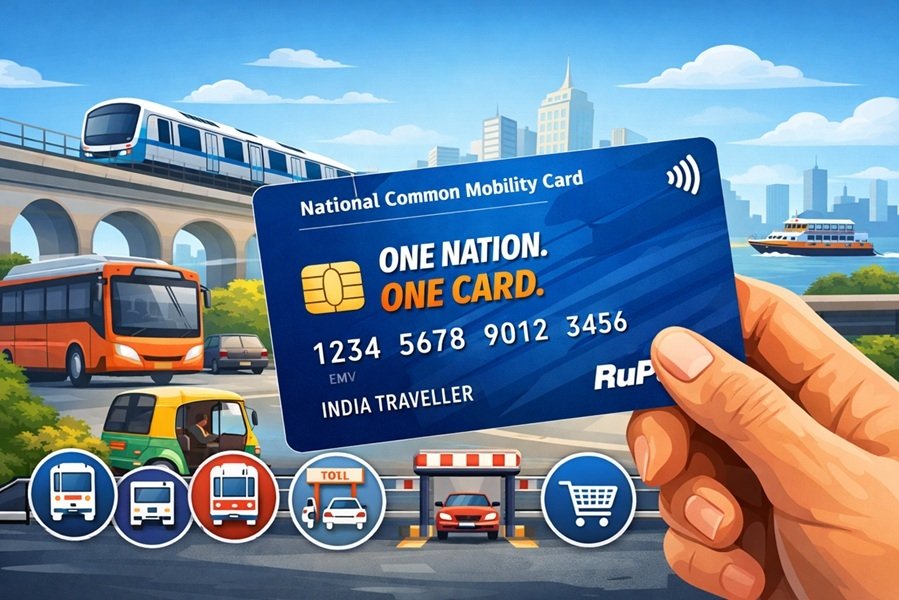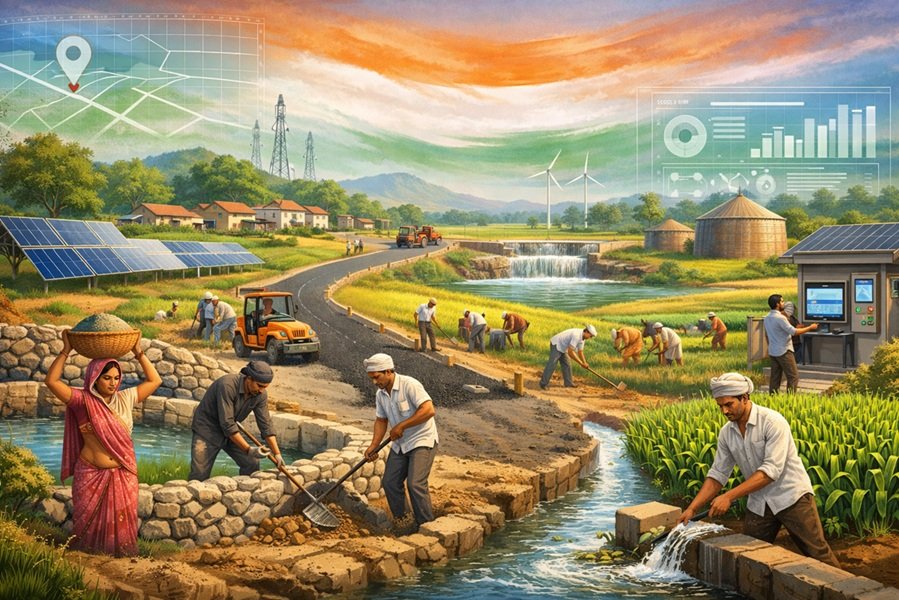
The Union Budget for 2025-26 emphasizes building a stronger, inclusive, and future-ready economy. With a clear roadmap for “Viksit Bharat” (Developed India), this budget introduces robust reforms across agriculture, MSMEs, education, infrastructure, and technology. Here’s an in-depth breakdown of the highlights and insights:
Empowering Agriculture and Rural India
- Introduction of the National Mission on High Yielding Seeds to improve productivity, pest resistance, and climate resilience.
- Establishment of a Makhana Board in Bihar for value addition and better marketing.
- The Prime Minister Dhan-Dhaanya Krishi Yojana, targeting agri-districts, will benefit 1.7 crore farmers.
- Enhanced credit support via Kisan Credit Cards (KCC) with a loan cap of ₹5 lakh, impacting 7.7 crore farmers.
Boost to MSMEs and Startups
- Revised investment limits for MSMEs: Micro enterprises (₹1 crore to ₹2.5 crore), Small enterprises (₹10 crore to ₹25 crore), Medium enterprises (₹50 crore to ₹125 crore).
- Launch of customized credit cards for micro-enterprises with limits up to ₹5 lakh.
- A new scheme supporting 5 lakh first-time entrepreneurs with term loans up to ₹2 crore.
Education and Skill Development
- Expansion of Atal Tinkering Labs to 50,000 government schools.
- ₹500 crore for a Centre of Excellence in Artificial Intelligence (AI) for education.
- Addition of 10,000 medical seats and development of Day Care Cancer Centres in district hospitals.
Infrastructure Development
- ₹1 lakh crore for the Urban Challenge Fund, supporting sustainable urbanization and redevelopment.
- Greenfield airports and financial support for projects in Bihar, including the Western Koshi Canal ERM.
- Launch of Asset Monetization Plan 2025-30, aiming to recycle ₹10 lakh crore for new infrastructure projects.
Sustainability and Clean Energy
- Establishment of a Maritime Development Fund (₹25,000 crore) for long-term financing of green initiatives.
- Continuation of the Jal Jeevan Mission with a goal of achieving 100% coverage by 2028.
Taxation Reforms
- Direct tax rate simplifications, focusing on middle-income groups:
- Effectively raising tax-free income threshold to ₹12 lakh.
- 5% for income between ₹4-₹8 lakh.
- 10% for income between ₹8-₹12 lakh.
- Doubling of the tax deduction limit for senior citizens to ₹1 lakh.
- Simplified compliance for small charitable trusts with registration validity extended to 10 years.
- TDS on rent raised from 2.4 lakh to 6 lakh annually.
- 36 lifesaving drugs and medicines exempt from customs duties.
- Read this for more info: https://bharatarticles.com/budget-2025-live-new-income-tax-slabs/
Promoting Technology and Innovation
- ₹20,000 crore allocated for private sector-driven Research, Development, and Innovation (RDI).
- The National Geospatial Mission for land records modernization and infrastructure planning.
- Launch of BharatTradeNet, a unified platform for trade documentation and financing.
Social Justice and Inclusivity
- Welfare schemes for online platform workers, providing healthcare and registration under the e-Shram Portal.
- A revamped PM SVANidhi Scheme, offering enhanced credit for street vendors.
- Tourism and Employment Generation
- Development of top 50 tourist destinations with better connectivity and streamlined e-visa facilities.
- Introduction of MUDRA loans for homestays to promote local tourism.
Data-Driven Insights
- Revenue and Expenditure Trends
- Revenue receipts are projected to grow from ₹30.9 lakh crore in 2024-25 (RE) to ₹34.2 lakh crore in 2025-26 (BE).
- Capital expenditure continues its upward trajectory, reaching ₹15.5 lakh crore in 2025-26.
- Sectoral Spending
- Education: ₹2,66,817 crore.
- Rural Development: ₹1,28,650 crore.
- Defence: ₹4,91,732 crore.
- Agriculture: ₹1,71,437 crore.
- Railway: 2.52 lakh crore.
- Deficit Trends
- Fiscal deficit is projected to reduce to 4.4% of GDP, showcasing fiscal discipline.
- Effective revenue deficit is also maintained at 0.8% of GDP.
- Composition of Government Revenue
- Income Tax: 22% of total revenue.
- GST and other indirect taxes: 18%.
- Borrowing and liabilities: 24%.
Analysis of Impact
1. Economic Growth
With targeted reforms in MSMEs, agriculture, and technology, the budget lays a strong foundation for a $5 trillion economy. The reduced fiscal deficit aligns with India’s long-term growth aspirations.
2. Inclusivity
Programs focused on women, youth, and rural populations emphasize equitable development. For instance, enhanced credit support and welfare measures aim to uplift marginalized communities.
3. Sustainability
Allocations for green initiatives like the Maritime Development Fund and energy reforms reflect a commitment to India’s climate goals.
4. Innovation Ecosystem
The budget encourages private-sector participation in R&D, paving the way for advancements in AI, geospatial technology, and other emerging sectors.
5. Ease of Living
Tax reforms, digital public infrastructure, and urban development initiatives will directly enhance the quality of life for India’s middle-class population.
Interactive Poll: What’s Your Take on Budget 2025-26?
Which sector do you think will benefit the most?
- Agriculture
- MSMEs
- Technology
- Education
- Infrastructure
Recommend: Budget Glossary: Key Terms and Definitions You Must Know
References:
The article based on https://www.indiabudget.gov.in/doc/Budget_at_Glance/budget_at_a_glance.pdf
Explore: https://www.indiabudget.gov.in/





